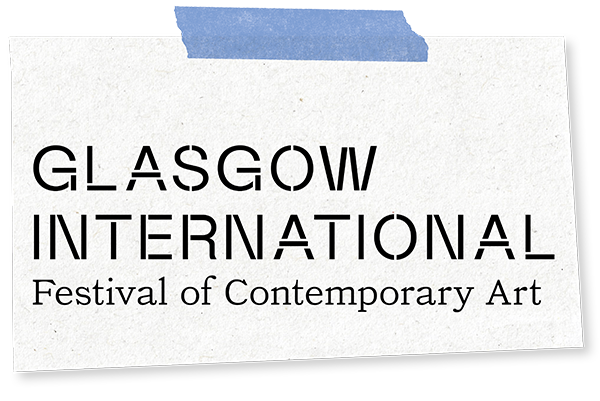Programme 2

Glasgow International 2024 will take place from Friday 7 – Sunday 23 June 2024. The festival will include artists' projects presented around the city of Glasgow in established arts organisations, artist-run spaces, and temporary locations.
Featuring exhibitions, performances, publications and interventions, the programme is a collective endeavour developed by Glasgow-based organisations and independent organisers, and the Glasgow International team. The festival will also include a number of 'gatherings' - social occasions that will give space to particular themes and concerns connecting different projects in the programme.
The visual identity for Glasgow International 2024 has been created through a collaboration between artist Matthew Arthur Williams and designer Maeve Redmond, and developed from their research into the social and material histories of Glasgow’s environment and architecture.
The external members of the selection panel for the Glasgow International 2024 open-call were Scotland-based artists Rabiya Choudhry and Jamie Crewe; Sabrina Henry, curator at CCA Glasgow; and Cédric Fauq, chief curator at Capc Musée d’Art Contemporain de Bordeaux, France.
Participants in Glasgow International 2024 include:
Lawrence Abu Hamdan
Clay AD
Martin Beck
Rabindranath X Bhose
Kim Bohie
Jamie Bolland
Sarah Booker
Enzo Camacho & Ami Lien
Bobbi Cameron
Sarah Cameron
Aurelie Chan Hon Sen
Helen Charman
Anne-Marie Copestake, Emmie McLuskey & Duncan Marquiss
Xuan Gao
Sandra George
Paria Goodarzi
Reiko Goto & Collins + Goto Studio
Ines Gradot
Mia Gubbay
Ashanti Harris
Mina Heydari-Waite
Adrien Howard
Cindy Islam
Francis Jones
Saffa Kahn
Rudy Kanhye
Jasleen Kaur
Jackie Kay
Katherine Ka Yi Liu
Emelia Kerr Beale
Minne Kersten
Josie KO
Alexis Kyle Mitchell
Mason Leaver-Yap
Lauren La Rose
Delaine Le Bas
Sabe Lewellyn
Siyao Li
Hang Linton
Laura Lulika
Lisette May Monroe
Suds McKenna
Jonathan McKinstry
Hussein Mitha
Jack Murphy
Belladonna Paloma
Josie Perry
Susan Philipsz & Radio International
Maeve Redmond & Matthew Arthur Williams
Nadia Rossi
Cameron Rowland
Rumpus Room's Children & Young People
Kyalo Searle-Mbullu
Oren Shoesmith
Joey Simons
Nicole-Antonia Spagnola
Natasha Soobramanien
Sasha Staicu
Joana Stawnicka
Tako Taal
Camara Taylor
Kialy Tihngang
Owain Train McGilvary
Clarinda Tse
Zoë Tumika
Kotryna Ula Kiliulyte
Jonny Walker
Rachel Walker
Holly White
Richard Wright
Cathy Wilkes
Martha Williams
Francesca Zappia
Wei Zhang
Wei Zhou
Organisations and groups organising festival projects include:
ajabu ajabu
CCA Glasgow
Cento
Celine
Common Ground
Craigmillar Now
David Dale Gallery
Dresden University of Fine Arts
FUTURE FULL
Gallery of Modern Art (GoMA)
Glasgow Artists’ Moving Image Studios
Glasgow Museums
Glasgow Print Studio
Glasgow School of Art Exhibitions
Glasgow Sculpture Studios
Glasgow Women's Library
Hill52 Radio, Glasgow School of Art
INQUEST
Ivory Tars
Leverndale Recreational Therapy
Listen Gallery
Market Gallery
Maryhill Integration Network Art Group
Maud Sulter Estate
Platform
Project Ability Gallery
Rosie’s Disobedient Press
Rumpus Room
The Common Guild
The Hunterian
The Modern Institute
Tramway
Street Level Photoworks
SWG3
University of Glasgow
Further details of the Glasgow International 2024 programme will be published in Spring 2024.
Sign up to our mailing list and follow our social channels to be the first to receive more information about Glasgow International 2024.
